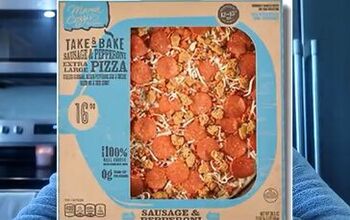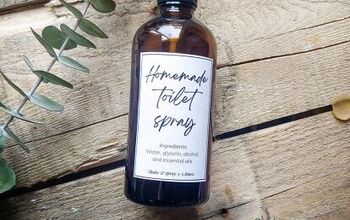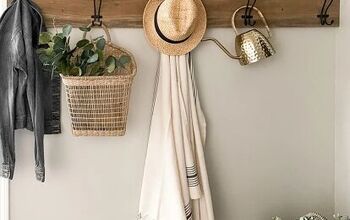55 Things to Stop Buying to Save Money in 2023

Need to save more money?
High inflation can take a toll on your budget, especially if you’re a one-income household. Knowing which things to stop buying can help you preserve more of your income so you’re less stressed financially.
Some of the best things to stop buying to save money are obvious. For example, cutting out takeout foods or processed foods could easily give your grocery budget a boost.
But there may be even more things you could stop spending money on unnecessarily that can lead to huge savings. Examining your budget and current spending habits can be a great way to find — and plug — the money leaks.
Ready to stop wasting money on stuff that doesn’t add value to your life?
Today, we’re breaking down the best things to stop buying in order to save more money.
Need Some Extra Cash?
👉Survey Junkie. Get paid to share your opinions with Survey Junkie and earn up to $50 per survey! Join Survey Junkie now
👉Swagbucks. Want to get paid to play games, watch videos and surf the web? Join Swagbucks now and get a $5 bonus
👉Ibotta. Earn cashback when you shop with a top cashback app. Download Ibotta for up to $20 in cash bonuses!
👉InboxDollars. Take surveys with InboxDollars and earn money for your opinions. Join InboxDollars now
👉Rakuten. Get paid to shop with Rakuten and earn up to 40% cashback! Join Rakuten and get a $10 cash bonus
👉GetUpside. Save money on gas with GetUpside! Earn $0.25 cents per gallon in cashback
👉CashApp. Want $5 free? Sign up for CashApp using code ‘VZXRXZN’ to claim your bonus!
20 Things to Stop Buying Now for Instant Savings
If you need to drastically cut expenses or you’re trying to figure out how to live frugally on one income, every penny counts. Figuring out which things to stop buying or spending money on can start with going through your budget line by line to see where you can trim the fat.
The following checklist covers some of the best things to stop buying if you’re serious about saving money. The more unnecessary expenses you can cut, the more you can save.
1. Bottled water
Bottled water is not great for the environment and it isn’t great for your wallet either.
So to save money, consider skipping bottled water and investing in a reusable water bottle instead. And if you’re worried about water quality, you can also pick up a filter pitcher or tap filter.
2. Cable TV
Cable TV can easily cost $100 or more each month. That’s $1200+ a year you might be spending on something you may not even use that often.
Cutting out cable and switching to streaming services can be a cheaper way to stay entertained at home. You can invest in a Roku to stream Hulu, Netflix and your other favorite channels.
3. Prepackaged food items
Prepackaged food is one of the best things to stop buying if you want to save money on groceries.
Any type of prepackaged or convenience food is almost always going to cost more than buying fresh ingredients separately.
Sure, you get the benefit of time saved if prepackaged food is easy to make. But you’re going to pay for it in your budget.
And not to mention, a lot of prepackaged or convenience foods are not that healthy. So that’s another reason to add them to your list of things to stop buying.
Pro Tip: Use Ibotta to save money on groceries
If you’re not using Ibotta to save money on grocery shopping then you’re really letting money slip through your fingers.
With the Ibotta app, you can earn cashback on groceries and shopping at plenty of top retailers. All you have to do is download the Ibotta app and link up your store loyalty cards. This is a simple way to earn money back on everyday purchases.
🌟Want a simple way to save money?🌟
Earn cashback when you shop partner stores with the Ibotta app!
Get up to $20 in bonuses when you download Ibotta now!
Related post: 65 Delicious Dirt Cheap Meals To Make When You’re Broke
4. Take out coffee or smoothies
Author David Bach talks about the latte factor and how it can be a huge budget buster.
While skipping a daily or weekly latte may not be a magic bullet for becoming a millionaire, I think it can definitely help with saving money.
Say you spend $5 a day on takeout coffee, smoothies, boba–whatever your taste. Do that 365 days a year and you’ll spend $1,825.
Now, do that every year for 40 years and you’ll spend $73,000 on coffee.
That’s not $1 million but it isn’t pennies either. So that’s 73,000 reasons to consider buying a quality coffee maker or smoothie maker and whipping up your own drinks at home.
5. Paper towels/paper plates
Paper towels and paper plates can be some of the toughest things to stop buying because they’re so convenient. But really, you’re literally throwing in the trash when you buy them.
You use a paper towel or paper plate and into the garbage it goes. You’re better off using washable cloth towels and regular plates instead if you want to save money.
6. Extended warranties
Extended warranties are one of the biggest money scams consumers fall for. You purchase an extended warranty, only to find out later that there are a ton of exclusions or your warranty period has already expired by the time you get around to using it.
Unless you know with some degree of certainty that you’ll use an extended warranty, you’re better off skipping it.
And you might already have warranty coverage without realizing it. If you used a credit card to buy something, one of your card perks might include an extended warranty or purchase protection.
7. In-game or in-app items
Playing video games or using apps can be a stress reliever. And some apps like Swagbucks will even pay you to play games.
But games can be a money-waster if you’re spending on in-game or in-app purchases. So if you’ve connected your favorite games and apps to your debit card, credit card or mobile wallet app, disconnect them ASAP.
This removes all temptation to spend because it’s not so easy to throw away money at the click of a button.
8. Online purchases that don’t earn cash back
Shopping online can be another money-waster, unless you’re earning cash back on each purchase. Using cash apps means you don’t have to stop buying things online, since you can get back a percentage of what you spend.
That’s essentially free money that you get when you shop as you normally would.
Looking for some cash back apps to try? Here are three of my favorites:
Rakuten – Rakuten pays up to 40% cashback when you shop online or in stores at brands. I love Rakuten because they pay you through PayPal so you don’t have to wait for a check to get the cashback you’ve earned. Plus, you can earn a $10 bonus when you sign up with this link and earn more cashback for referring people you know to the app.
Dosh – Dosh is another great option for earning cashback on shopping, dining or travel. Dosh doesn’t offer a big sign-up bonus the way Rakuten does but you can earn referral bonuses for every new user you get to try the app.
Ibotta – I already mentioned Ibotta for earning cashback on groceries. But you can also use Ibotta to earn cashback on shopping, too. Again, you just have to download the Ibotta app and link your store loyalty cards. Sign up now and grab your $20 Ibotta cash bonus!
Drop – Drop is another cash-back rewards app that pays you to shop. Over 3 million people are using Drop to earn cashback and if you’re not one of them yet, you can sign up with this link!
Related post: 12 Best Cash Back Apps to Download for Making Easy Money
9. Clearance or sale items
Clearance and sale items are the absolute worst culprits for wasting money. But I know what you’re thinking. How can that be if it’s a deal?
And therein lies the problem. You see a clearance or sale item and think, hey I’ll save money if I buy it since it’s marked down.
But you forget to ask the key question: Do I need this? And if we’re being honest, the answer is probably no 9 times out of 10.
So if you’re looking for things to stop buying to save money, developing a blind spot where the clearance bin is concerned can be a huge help.
10. Books
If you’re a book-lover, then this might be one of the most difficult things to stop buying. But if you want to save money, then you have to be realistic about spending your hard-earned dollars on the latest hardbacks, since they can easily cost $30 or more.
So here’s what I suggest: Stop buying hardbacks or physical books altogether.
Instead, try reading them on your Kindle or tablet. Amazon has a great selection of books for Kindle that cost way less than what you’d pay for a paper version.
And if you’re skeptical about reading on your Kindle then you can always try audiobooks instead. In fact, you can snag two free books from Audible with this link!
11. Clothes that need to be dry cleaned
Dry cleaning can be a sneaky cost that drains money away from your budget.
Consider this. Say you spend $50 a week on dry cleaning. That’s $2600 a year you could be saving instead.
A simple fix is to add clothes that need to be dry-cleaned or any clothing that needs special care to your list of things to stop buying. If you can’t get it clean with your washer and dryer at home, then skip buying it.
And if you need a specialty item (like a formal dress or a suit) see if you can pick something up from a consignment shop before you pay full price at a department store.
Related post: Laundromat Near Me? Where to Find a Safe, Cheap Place to Do Laundry
12. Streaming services you don’t use
Earlier, I mentioned cutting cable and switching to streaming services instead. But it’s important to be choosy about what you pay for.
Because even though you may pay $5 or $10 a month to stream your favorite channels, you could easily end up spending just as much as you would on cable.
The hack for saving money? Regularly audit your streaming services and online subscriptions and ditch the ones you don’t need.
The Trim Financial Manager is a big help for this.
Trim reviews your spending and helps you cut out subscriptions you don’t use. And Trim can also save you money on bank fees and other expenses, too.
If you’re not using Trim to save money yet, give it a try to see how much you can cut from your budget.
13. Takeout food
The typical household spends $3,030 a year on food away from home.
That works out to about $250 a month. And really, that’s quite a bit of money to spend on takeout food or restaurant meals that you could be saving.
But there’s a simple fix.
If you want to save this $3,500 a year, you just have to start making meals at home.
Meal planning can help with that. When you meal plan, you decide ahead of time what you’re going to make.
This can save you time because you don’t have to guess about what’s for dinner. And you can save money because you can tailor your grocery list to your meal plan.
If you’re overwhelmed at where to start with planning meals, you can always try a low-cost service like $5 Meal Plan.
With $5 Meal Plan, you can get preplanned meals for pennies. It’s a great investment if you want to try meal planning with minimal headaches.
👉 Get started with $5 Meal Plan and save money on meals at home.
14. Haircuts and beauty treatments
Haircuts, facials, pedicures and manicures are all nice-to-haves in your budget. But they can get expensive if you’re paying for these things weekly or monthly.
Instead of spending money on beauty treatments, consider what you can do at home.
For example, you might save money by cutting your kids’ hair at home. You might need to make a one-time investment in a set of quality hair clippers but you can more than make up for that in money saved on haircuts.
Unless salon or spa visits are an absolute must for self-care, then consider if you can add them to your list of things to stop buying.
And if you can’t cut them out completely, think about cutting back on how you often go. For example, instead of going every month try every other month instead.
Every penny you can save this way adds up.
15. Name brand items
Name-brand items cost more because a lot of what you’re paying for is the name brand itself.
Now, I agree that some name-brand things are of higher quality than generic brands. There’s a clear difference between Charmin and generic brand toilet paper.
So you don’t necessarily have to ban all name brands. But switching out some name brands for generic is an easy way to save money.
Look through your pantry, kitchen cabinets, laundry room and bathroom cabinets. Make note of all the name brands you see.
Now, consider which ones you’re comfortable swapping for generic. For example, ditching name brand medicines could be a simple way to save.
Give the generic brands a test run to see how you like them. And if you don’t see a noticeable difference then you can stick with this money-saving strategy.
16. Impulse purchases
Impulse buys can kill your budget. Even small things can add money to your shopping trips.
So make a conscious effort to put the brakes on impulse purchases.
This can include:
- Clearance or sale items
- Items that are near the checkout
- Anything that you weren’t planning to buy when you walked in the store
This is where shopping with a list can help you avoid overspending.
Make a list before you leave home, then set your budget for shopping. If you feel the urge to give in to an impulse buy, make a deal with yourself that you’ll remove something that’s already in your cart.
This forces you to make a choice. And if you’ve come into the store knowing what you need, it can be great motivation to stick to your list.
17. Magazine subscriptions
Magazines are not cheap. Some of them cost $12 or even $15 for one issue.
Getting a subscription could save you money. But it’s not really worth it if you’re not reading what you’re buying.
So magazine subscriptions could be one of the best things to stop buying if you’re trying not to waste money.
And here’s a tip: if you really want magazines to read, you can earn them for free instead of buying them.
RewardSurvey pays you with points that you can redeem for magazines. All you have to do to get those points is take quick surveys on your phone.
Free magazines for little effort sounds good, right?
And when you sign up for RewardSurvey now, you can get a $30 credit toward your first magazines!
18. High-end phones
Spending $600 or $1000 on a cellphone just doesn’t make sense if you’re trying to stretch a tight budget.
The only exception might be if you’re using your phone to create amazing videos for a TikTok or YouTube channel you’ve monetized. Or using it to snap jaw-dropping photos as a paid Insta influencer.
In that case, spending hundreds on a phone could be justified if you’re using it to make money.
But if you only use your phone to text or make calls or look at cat memes, then are the extra bells and whistles really necessary?
Before you drop a bunch of money on an expensive phone, consider how much you’ll use it and how long it’ll last. Phone technology is always changing so that $600 phone you buy might be outdated in six months.
And think about switching your contract plan to a prepaid cellphone plan while you’re at it.
Prepaid cellphone plans, like the ones from Tello, can cost under $50 a month. And you can still get a decent phone for a fraction of the cost.
Looking to save money on cellphone service? Compare plans and pricing with Tello today.
19. Dryer sheets
Dryer sheets smell great but they’re just money you literally throw away. And they can be one of the easiest things to stop buying if you want to save money.
And dryer balls make a great substitute. Dryer balls are designed to be reusable and they can help dry clothes faster, which can save on electric bills.
👉 Check out these budget-friendly dryer ball options
20. Anything you can’t reuse or recycle
Any time you buy something, ask yourself if it’s something you can recycle or repurpose later.
Recycling and reusing things cuts down on waste. And the more uses you can get out of something the more money you can save.
For example, instead of using Ziploc bags or cheap plastic containers, try some durable glass food containers instead.
Or instead of using aluminum foil, try reusable beeswax wrappers.
Those are just two examples. Before you buy something (or throw it out) think about all the possible ways you could use it.
This can help you figure out which things to stop buying that would otherwise end up in the trash.
More Things to Stop Buying to Save Money
So far, we’ve covered some of the most obvious things to stop buying if you’re ready to grow your savings. But what else can you cut out of your budget?
Here are 35 more things to stop buying for added savings all year long.
- Gym memberships (work out at home instead)
- Multivitamins or supplements (most of them don’t work)
- Premium gas (again, usually not worth it)
- Home decor or knickknacks
- Bulk purchases that you won’t actually use
- Pet toys or clothes
- Women’s razors (you can buy men’s razors for less, thanks to the pink tax)
- Disposable feminine hygiene products (switch to reusable, washable period panties instead)
- Cleaning supplies that you can make at home
- Laundry detergent, if you can make your own
- Kids’ toys
- Unnecessary insurance (but don’t ditch your life insurance)
- Trendy kitchen gadgets or appliances (stick with the classics, like a Crock Pot or Instant Pot)
- Cheap jewelry that isn’t made to last
- Fast fashion (bad for your wallet and the environment)
- Lottery tickets
- High banking fees (switch to a fee-friendly online bank instead)
- Late fees (scheduling automatic bill payments can help you avoid this money-waster)
- Fancy gift wrapping for holiday or birthday gifts
- Greeting cards for birthdays or holidays (honestly, many people toss them anyway)
- Cigarettes (quitting smoking can save money and it’s good for your health)
- Alcohol
- Soda or energy drinks
- Juice boxes
- Plastic wrap and Ziploc bags
- Aluminum foil
- Deli meat
- Pre-shredded cheese
- Bread, if you can make your own at home
- Expensive glasses if you can buy them for less online
- Lip balm (use coconut oil to keep your lips moist and healthy instead!)
- Disposable diapers (cloth diapers can cost half as much)
- Swiffer pads
- Anything you can’t buy with a coupon or promo code
- Anything you could get for free
Here’s something else to stop buying: The idea that you need to spend money to be happy.
The idea that money can buy you happiness isn’t a physical thing you can stop buying. But I’ve included it here because FOMO is a real thing that can lead to overspending.
If you find yourself assuming that you can only be happy when you’re spending money or buying things, ask yourself where this idea comes from.
It might be social media or your friends. Or it might be the way your parents handled money when you were growing up.
Then consider whether spending really does bring you happiness, beyond a temporary rush.
Chances are, the answer is no. And if you’re struggling to get overspending under control consider talking to a nonprofit credit counselor who can help.
How Do I Cut Unnecessary Spending?
Unnecessary spending can be a drag on your finances. If you’re ready to stop buying things you don’t need, these steps can help you to eliminate waste in your budget.
1. Find a budget system that works for you
When you budget your money, you’re deciding what to do with it. You’re directing your spending instead of letting your spending control you.
There are lots of ways to budget. For example, you can:
- Budget by percentages
- Use budget categories
- Try zero-based budgeting
- Use a budget planner to track spending and income
- Budget with cash envelopes
- Try a free monthly budget template.
- Use an app like Personal Capital to manage your budget
It doesn’t matter that much which way you decide to budget. What matters most is that you create a realistic budget.
When you pick the right budget method, it’s a lot easier to stick with your spending plan. And that can help you stop buying things you don’t need all the time, which means saving more money.
👉If you’re looking for some cash envelopes to get started, be sure to check out the cute options in the Boss Single Mama shop!
2. Separate wants from needs
One of the secrets to get out of spending mode and stop buying stuff is knowing what’s a want and what’s a need.
A need is anything you need to spend money on to take care of yourself and your family. So the biggest needs for most people are things like:
- Rent or mortgage payments
- Utility bills
- Food
- Transportation
- Insurance
- Basic clothing
Anything that isn’t required to maintain a basic standard of living is a want.
If you want to stop buying things to save money, take time to figure out what your wants vs. needs are.
Go through your monthly spending, line by line. (And if you’re not tracking your spending, Personal Capital is really helpful for this.)
Take a hard look at where your money is going and decide what stays in and what gets cut from the budget.
This can make a huge difference when you’re trying to stop buying unnecessary things because it forces you to be intentional about your spending.
👉Ready to become a budgeting pro and stop struggling with money? Get your digital envelope system started with Qube Money!
3. Embrace the idea of living on less
Living below your means is a good thing if you want to be able to save money and get ahead financially.
When you live below your means, you don’t spend more than you earn.
Instead, you have money left over each month that you can save or invest. Or use it to pay down debt if you have student loans, credit cards or other debts.
If you want to cut out unnecessary spending and stop wasting money, then you really have to learn to live below your means. (And like it.)
So, some ways you can do that are:
- Negotiating your bills down as much as possible ( Billshark is great for this)
- Figuring out your needs vs. wants
- Creating a workable budget and sticking to it
- Using the 30-day rule to save money
- Learning to be happy with less “stuff” or less spending
One really simple way to start living below your means is to try a no-spend challenge.
A no spend challenge means you don’t spend money on anything other than essential needs for a set time period.
For example, you may try a no spend week or weekend. If you’re really driven to get on the live below your means bandwagon, a no spend month might be better.
A no spend challenge is an effective way to stop spending money on unnecessary things because you really have to be committed for it to work.
Final thoughts on things to stop buying
Making the decision to stop wasting money on unnecessary things can completely change your financial picture. It’s possible that once you see how much money you can save, you won’t even miss those things you decided to stop buying!
If you’re still struggling to wrap your head around the idea of cutting out certain expenses, don’t try to do this list all at once. Instead, pick one thing at a time to stop buying.
Then as you get used to buying less of that thing, you can add something else to the list. This is an easy way to cut back on spending without feeling deprived.
Need more money tips? Read these posts next:
- 50 15 5 Rule: How to Save More and Spend Less
- 200 Envelope Challenge (Save $5,100 in 200 Days!)
- How to Save 10000 in a Year [Simple Tips That Really Work!]
- 52 Week Money Challenge Explained (+ Free Weekly Savings Challenge Printable)
- How to Afford to Be a Stay at Home Mom (8 Practical Tips for Families)
50 Things to Stop Buying to Save Money
























Comments
Join the conversation
Today’s women are doing away with top sheets. Too lazy to make a bed? And they’re gping to use cloth diapers and washable period underwear?? Yeah, right!
give up paper towels, dryer sheets etc for reusable? Our 2 biggest expenses is water and electricity so wouldn’t be cost effective for me. And let’s not get into the cost to re-wire and charge electric vehicles…